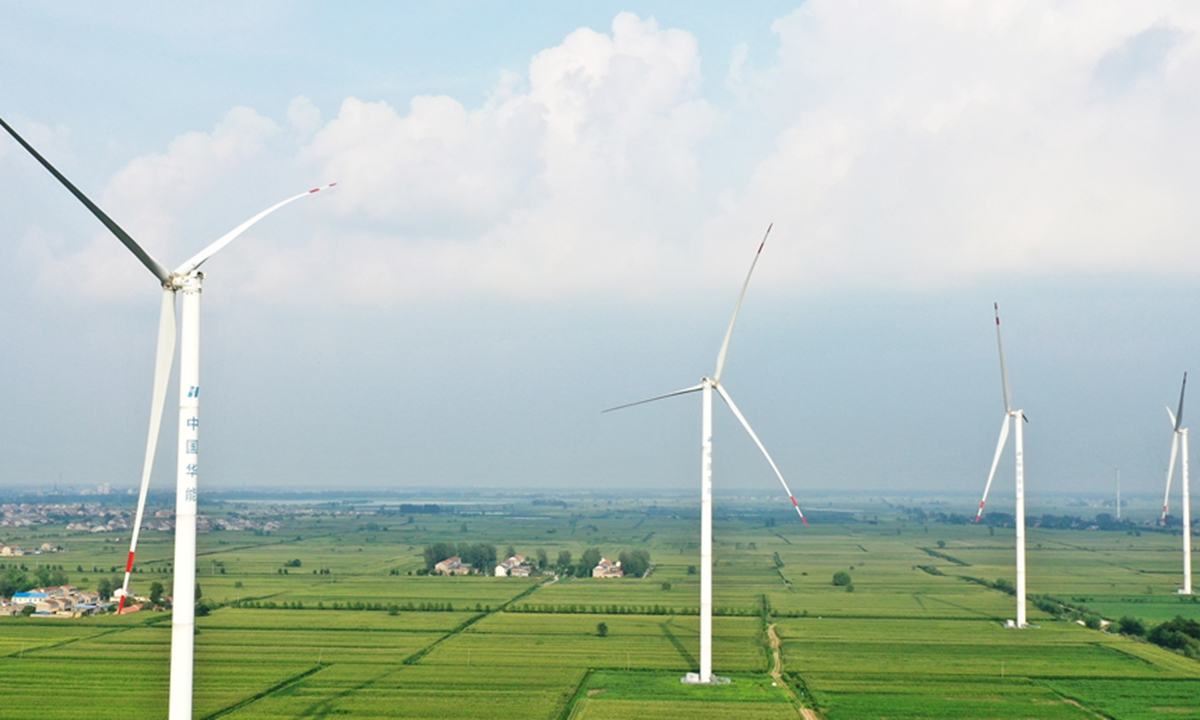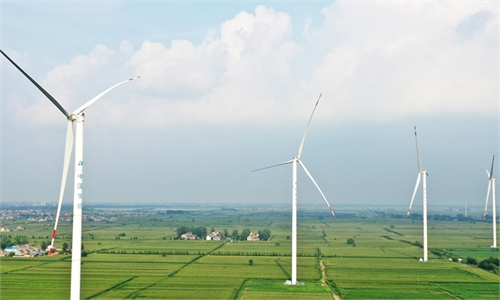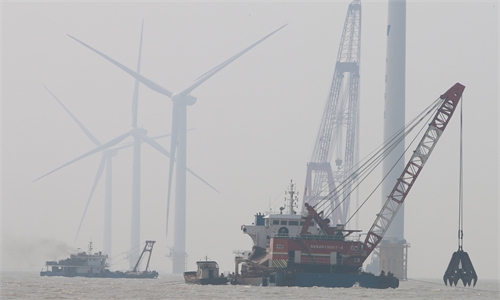EU tariffs on Chinese steel towers for wind turbines ‘have little impact’ due to small market share

Wind turbines stand among crops in East China's Anhui Province. Photo: cnsphoto
EU tariffs on steel towers used for wind turbines from China won't result in a huge impact to the country's wind turbine exports, as the Asia-Pacific region and some countries along the Belt and Road Initiative (BRI) are the crucial markets, industry observers said.
As nations ramp up efforts to tackle climate change and consider transitioning to green energy, China's strong growth and increasing share in the global new energy industry have made some Western companies, which used to be world-leading and monopolized the sector, feel uncomfortable.
After an investigation launched following a complaint by the European Wind Tower Association, the European Commission decided to impose anti-dumping duties on imports of steel wind towers from China, with duties ranging from 7.2 percent to 19.2 percent.
The duties, which apply for five years and start on Friday, aim to protect and defend EU producers and workers, such as those in Denmark and Spain, according to the European Commission on Thursday.
Steel wind towers hold up wind turbines and do not require high techniques in terms of manufacturing.
"Low labor costs and the size of China's manufacturing make our wind towers cheaper than foreign products," an industry observer who asked for anonymity told the Global Times.
"It is a cliché for foreign countries to impose dumping duties on Chinese products once they find their domestic producers lose their competitive advantage to those from China. It was solar panels first and now it is wind turbines," he said.
The impact of the latest EU tariffs would be little to Chinese producers, industry observers said.
EU imports of steel wind towers from China are worth 300 million euros ($340.45 million), according to the European Commission.
This accounted for a small portion of China's wind power product exports. More importantly, the major part or the "brain" of wind generation is the turbine.
In 2020, exports of China's wind turbines were worth $1.1 billion, industry data showed.
The top overseas markets of China's wind turbine exports are Australia, the US, South Africa, Pakistan, Argentina and Ethiopia, according to data from a 2020 report sent by the Chinese Wind Energy Association (CWEA) to the Global Times.
"By the end of 2020, China had exported wind turbines to 38 countries, including four new markets: Canada, Croatia, Vietnam and Greece," the CWEA report said.
Goldwind, China's wind power giant, sold the largest number of wind turbines abroad last year, with their capacity overseas hitting 4,300 megawatts and accounting for 60 percent of China's total wind turbine exports, the company told the Global Times on Friday.
"Our operations have reached 32 countries, including Thailand, Pakistan, Argentina and Brazil," it said, adding it is exploring markets along the BRI.
Even if there is no big gap in terms of quality of products between Chinese and Western wind power giants, exports of Chinese companies still lag behind that of Danish Vestas, a major wind power company globally, the industry observer mentioned above told the Global Times.
"That is because Chinese wind power companies mainly rely on the domestic market, and so do the Americans. But European companies would rather focus on the international market," he said.
China pledged to peak carbon emissions by 2030 and achieve carbon neutrality by 2060. These ambitious goals place a bigger role on wind power.
Since China topped the world's largest wind power capacity in 2010 for the first time, it has kept the record for 12 consecutive years.
Official data show that China's wind power turbines have generated more than 300 million kilowatts, 1.4 times that of the EU and 2.6 times that of the US, compared with their capacity by the end of 2020.




